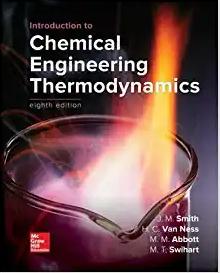Question
In the manufacturing process of a sheet material (length 3 m, width 3 m, thickness 6 mm) hydrogen gas is used and, at the end
In the manufacturing process of a sheet material (length 3 m, width 3 m, thickness 6 mm) hydrogen gas is used and, at the end of the process, H2 remains dissolved in the material at a uniform concentration of 160 kmol/m3. To remove H2 from the material, both surfaces of the sheet are exposed to an air stream parallel to the plate. The air is at 500 K and atmospheric pressure; the plate and air are in thermal equilibrium. The velocity of the air approaching the plate is 5 m/s and the drag force that the air stream exerts on the plate is 65 N. Due to contamination, the hydrogen partial pressure in the air stream is 0.04 atm. The physical properties of the air are unaffected by this.The mass diffusivity and solubility of hydrogen (A) in the sheet material (B) are DAB = 2.610-8 m2/s and SAB = 80 kmol/(m3atm), respectively.
A/ The diffusion coefficient of hydrogen in air at 300K and 1 atm is 0.3010-4 m2/s. Calculate the diffusion coefficient of hydrogen in air under the hydrogen removal conditions.
B/ Determine the average mass-transfer coefficient kc,L for hydrogen from the plate.
C/ If the sheet material is left exposed to the air stream for a long time, determine the final content of hydrogen in the material in kg/m3.
D/ Determine the time required to reduce the hydrogen mass density at the center of the sheet to twice the limiting value calculated in C/.
Step by Step Solution
There are 3 Steps involved in it
Step: 1

Get Instant Access to Expert-Tailored Solutions
See step-by-step solutions with expert insights and AI powered tools for academic success
Step: 2

Step: 3

Ace Your Homework with AI
Get the answers you need in no time with our AI-driven, step-by-step assistance
Get Started


